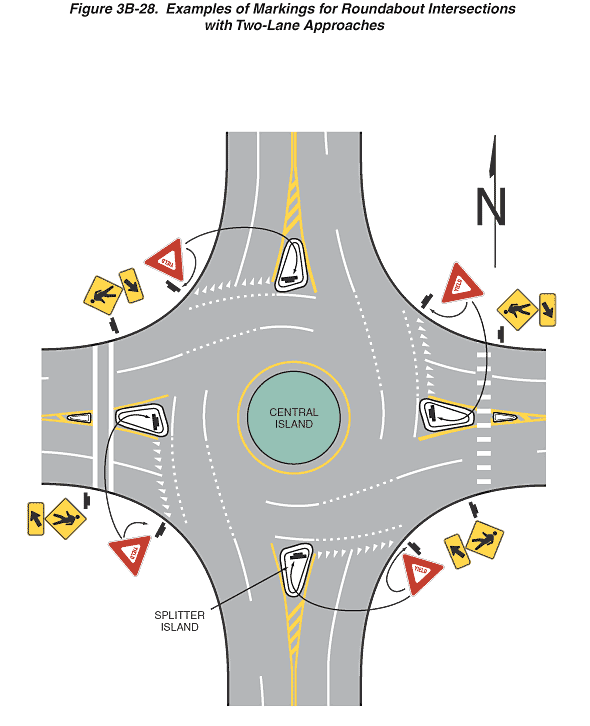
Figure 3B-28. Examples of Markings for Roundabout Intersections with Two-Lane Approaches
This figure illustrates examples of markings for roundabout intersections with two-lane approaches. At the top right of the figure, a black capital letter "N" is shown superimposed on an upward-pointing vertical black arrow, denoting the compass direction.
The figure shows a central island surrounded by a circular roadway. A solid yellow line is shown around the inner edge of the roadway. Four roadways enter the roundabout from the north, south, east, and west. Each roadway is a four-lane road with two lanes in each direction. A triangular splitter island separates the opposing lanes of each road where it intersects the circular roadway. Around the outer edge of the circular roadway, a solid white line is shown adjacent to each of the four splitter islands, a dotted white line is shown adjacent to each of the four entering lanes, and no line is shown adjacent to each of the four exiting lanes. A second solid white line is shown on the circular roadway, paralleling the outer line but closer to the central island, with a dotted white line parallel to the outer one that then changes to a solid white line as it joins the broken white line between the two lanes of the exiting lanes in each direction. On each of the four roadways entering the roundabout, the opposing directions of travel are separated by a solid double yellow line. As each roadway approaches the splitter island, the two solid yellow lines diverge to go alongside the two sides of the splitter island and diagonal yellow lines are shown in the area between the two diverging solid yellow an the near end of the splitter island.
On the roadways entering the circular roadway from the north and south, a yield line of white triangles is marked on the pavement across the two lanes of traffic entering the circular roadway in advance of and parallel to the dotted white line. A yield sign is shown on the right of both entering lanes alongside the yield line and also on the splitter islands.
On the roadway entering the circular roadway from the west, a crosswalk of two parallel white lines is shown immediately west of the splitter island, and the solid yellow lines and diagonal yellow lines are omitted within the crosswalk. On both the eastbound and westbound side of this roadway, a sign assembly composed of a diamond-shaped person walking sign placed over a leftward/downward diagonal arrow sign is shown on the right of the roadway just in advance of the crosswalk. Where the two eastbound lanes enter the circular roadway, a yield line of white triangles is shown on the pavement across the two lanes in advance of and parallel to the dotted white line. A yield sign is shown on the right of the entering lanes alongside the yield line and also on the splitter island.
On the roadway entering the circular roadway from the east, a crosswalk of a row of closely spaced white lines parallel to the flow of traffic is shown immediately in advance of the splitter island, and the solid yellow lines and diagonal yellow lines are omitted within the crosswalk. On both the eastbound and westbound side of this roadway, a sign assembly composed of a diamond-shaped person walking sign placed over a leftward/downward diagonal arrow sign is shown on the right of the roadway just in advance of the crosswalk. Where the two westbound lanes enter the circular roadway, a yield line of white triangles is shown on the pavement across the two lanes in advance of and parallel to the dotted white line. A yield sign is shown on the right of the entering lanes alongside the yield line and also on the splitter island.
